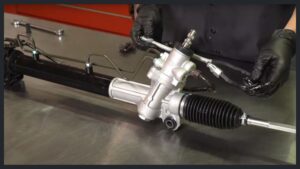
Electric vs Hydraulic Power Steering (What’s the Difference?)
Almost every car on the road today is equipped with power steering. Without it, the driver would have to use all his strength just to turn the steering wheel in one direction. This would definitely lead to an accident, as the driver would have to change direction within a second or two.
If he was forced to steer, he wouldn’t be able to turn fast enough in traffic. Thanks to the amazing technology of power steering, the driver hardly needs any force to turn the steering wheel. There are two types of power steering systems in use today: hydraulic power steering systems and electric power steering systems. Both serve the same basic purpose of power steering – being able to turn the front wheels of your vehicle (or all the wheels, in the case of four-wheel steering) with minimal effort.
The difference between these two types of power steering is in how they work. Here we take a closer look at the two types.
How Hydraulic Power Steering Works
Hydraulic power steering is one of the earliest forms of power steering technology. All of these work together to create the hydraulic force needed to turn your steering wheel with ease. But let’s look at how this pressure is created.
Your car’s engine has a rotary vane pump that generates hydraulic pressure at the right time. Every time you turn the steering wheel, the pump creates more hydraulic pressure, increasing the power you have when turning the steering wheel. This pressure increases as additional hydraulic fluid flows into the hydraulic cylinder through the valve. When this happens, the steering box receives pressure from the cylinder, and the wheels move along with the steering.
How Electric Power Steering Works
Electric power steering uses fewer parts than hydraulic power steering. Electric power steering relies primarily on an electric motor to generate the necessary pressure.
The rack in this power steering system contains the electric motor and valuable sensors. These sensors measure the exact torque of the driver. In other words, when the driver turns the steering wheel, the motor produces a constant amount of electricity to maintain that torque demand.
It only generates electricity when you turn the steering wheel. This also means that the engine will last longer and require less frequent repairs. What’s better? So which type of power steering is better? Most automotive experts and manufacturers say that electronic power steering is better.
How could it be otherwise? Electronic power steering systems are very simple with few parts. Hydraulic power steering systems have so many components that they are more likely to fail or lose fluid, making it difficult to turn the steering wheel, especially at low speeds.
Aside from the power steering systems themselves, let’s talk about their overall impact on the vehicle. Hydraulic power steering uses more engine power and resources than electric power steering. This reduces engine efficiency by about 1-2 miles per gallon. Despite the name, electric power steering does not require as much power to perform the same function. Electric power steering systems are usually maintenance-free.

